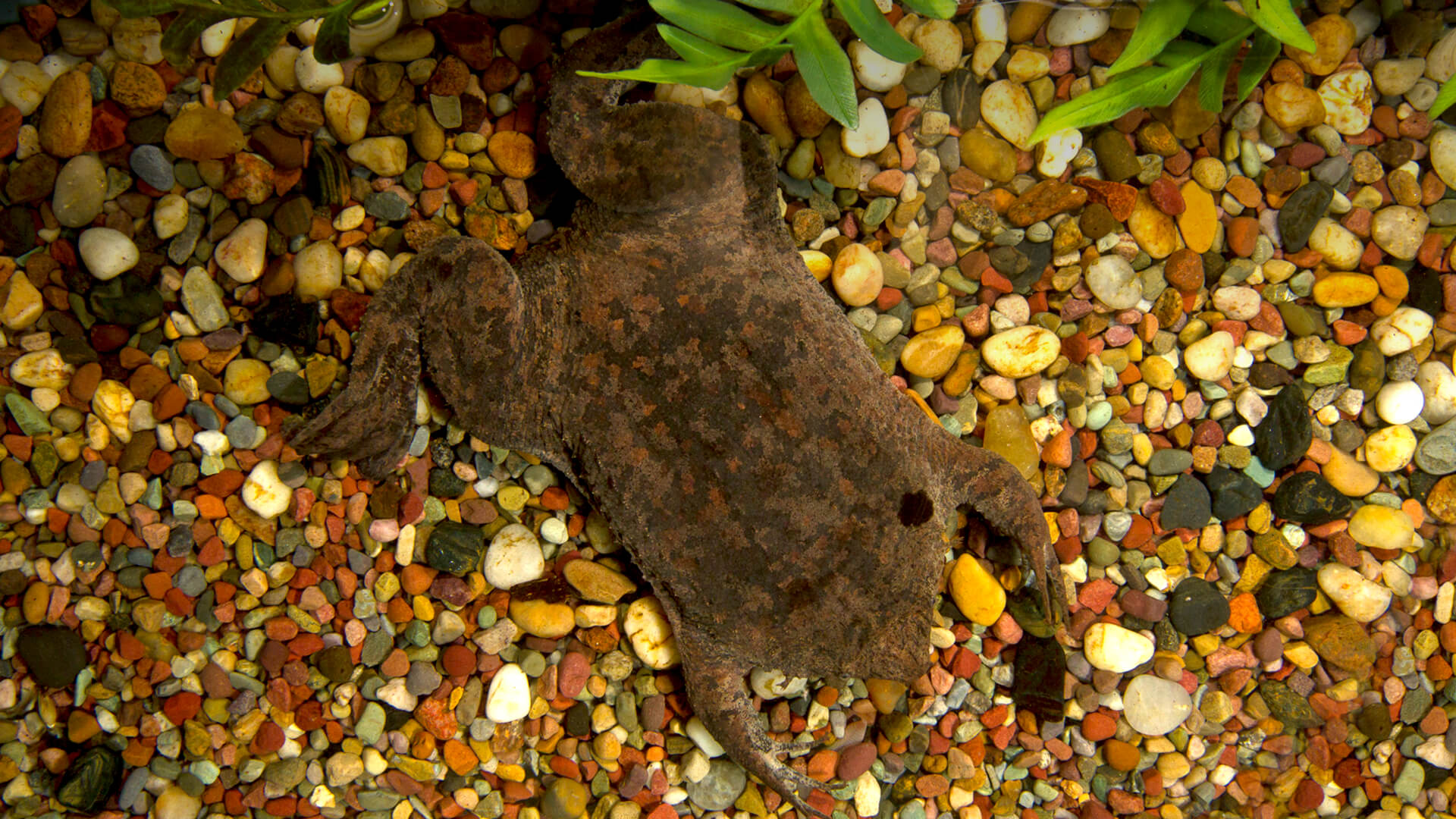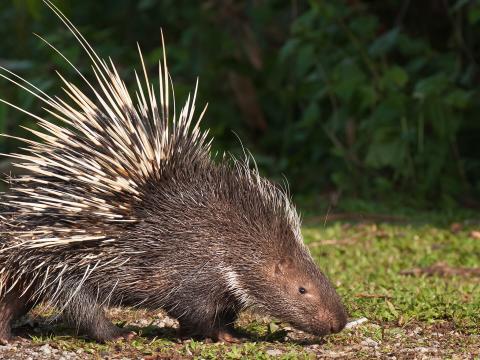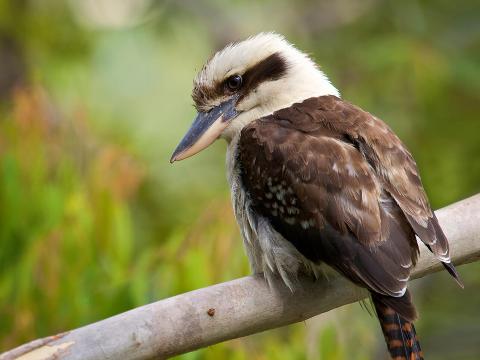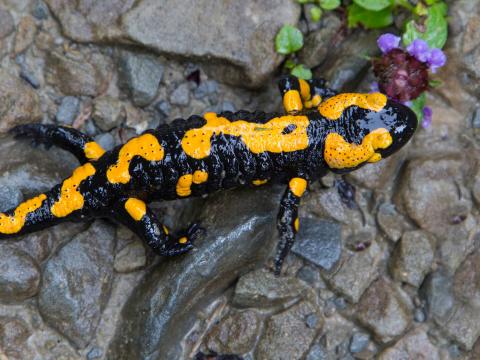Surinam Toad
- CLASS: Amphibia (Amphibians)
- ORDER: Anura
- FAMILY: Pipadae
- GENUS: Pipa
- SPECIES: pipa
ABOUT
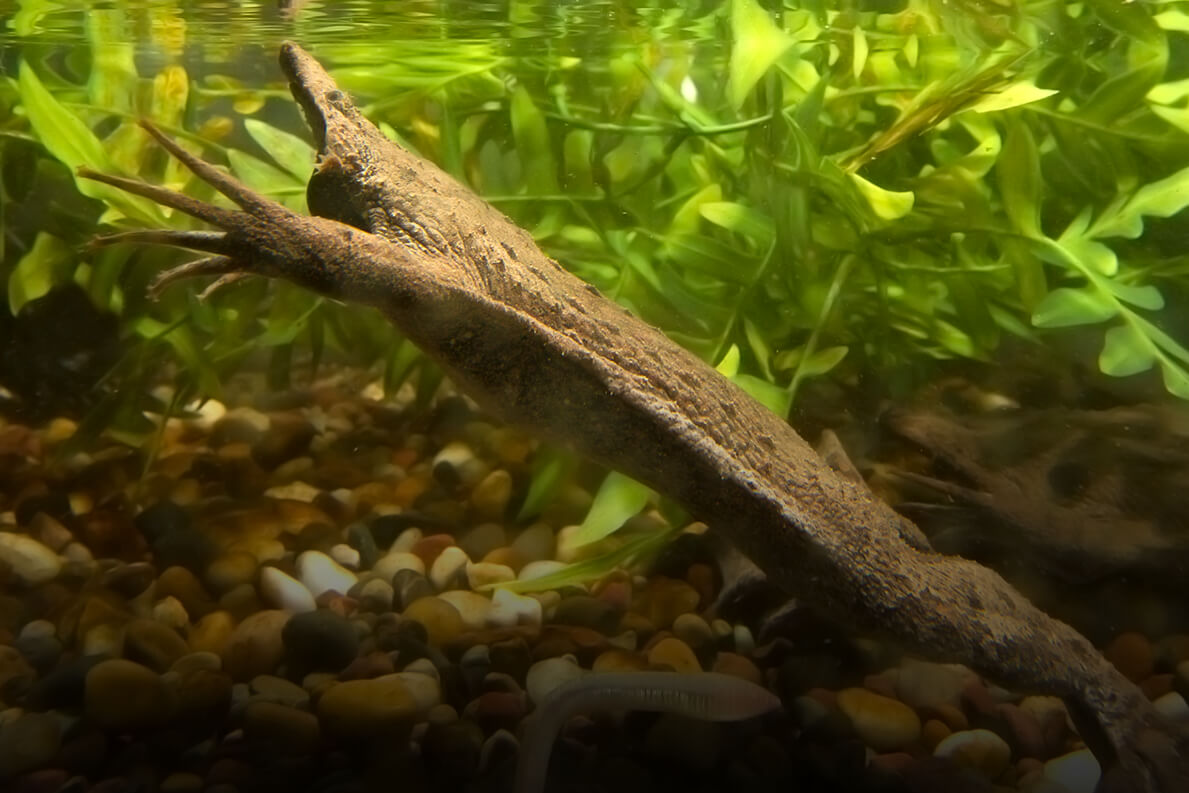
An amazing toad: The Surinam toad is a surprise from the first glance. Motionless in the water, you’d think it was a leaf or a rock, and that’s the idea! Its body is flat, its head is triangular, and its nostrils are at the end of two narrow tubes on its snout. The toad’s skin is pointy, rough, and colored a mottled brown, tan, or olive. Each finger on its forelimbs has a tiny, star-shaped tip, leading to the toad’s other name: star-fingered toad. Yet despite its unique appearance, the Surinam toad’s reproductive strategy is what sets this amphibian apart. It’s freaky, but amazing, too!
HABITAT AND DIET
Life in the mud: As weird as it looks, the Surinam toad is perfectly camouflaged to live an aquatic life on muddy river bottoms in rainforest and flooded forest areas in South America. It looks like a lump of leaf litter rather than living wildlife! The Surinam toad can measure between 4 and 8 inches (10 to 20 centimeters) long, but it doesn’t look much like a meal, so predators may pass it by.
The Surinam toad is an ambush hunter, lying patiently in wait for unsuspecting prey to pass by. The toad eats mostly crustaceans, small fish, worms, and other invertebrates. When the Surinam toad senses movement with its star-tipped fingers, it lunges forward and eats its prey in one gulp. The toad does not have teeth or a tongue, so its large mouth helps it swallow food whole.

FAMILY LIFE
Pop goes the toadlet: Unlike other toads, the Surinam toad has an unusual way of reproducing. Males call to the females by making a clicking sound underwater. A willing female releases 60 to 100 eggs, and the male fertilizes them and pushes the eggs onto her back, where they stick to her skin. During the next few days, her skin grows up and around the eggs, forming a honeycomb structure of pockets, and eventually encloses them completely. After hatching, the young ride on her back for three to four months, continuing to develop under her skin.
When ready, the fully formed toadlets push and squirm to loosen the female’s skin; the pockets on her back open up to reveal the snouts and waving feet of the toadlets! When they’re ready, they pop out of their holes and head for the water’s surface to breathe and begin life on their own. The little toads can start snapping at food right away, and don’t care if that food happens to be a sibling! The mother then sheds her skin, ready for the next breeding season.
CONSERVATION
As long as there are rainforests and swampy forests in South America, the Surinam toad will be fine. However, like many rainforest dwellers, the toad could be wiped out as humans continue logging and farming in these areas.

